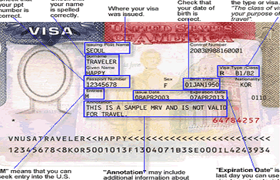Study In America
Choosing to study abroad is a big step and you dont have to do it alone. We will help you every step of the way. Please review the pages in the section for very important information about your education in the USA.
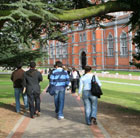


Choosing A School?
The first choice of destination for any student wishing to study abroad, the US is a favourite among millions of students around the globe. With the largest number of universities and colleges in the world, the country has much to offer international students- education of the highest quality, state-of-the art facilities, and immense opportunities for practical training. Study in USA not only offer credentials which are universally recognized, but an experience obtained during campus life which is worth as much as the education itself.
Unique to American institutions is the course curriculum which is structured to give you a holistic education while allowing you to focus on your specific area of interest as well. Students studying in USA get to choose subjects from other departments and faculties that will give them complementary skill sets much required in today's competitive global markets.
With dedicated teams to cater to the needs and interests of international students from different parts of the world, the support and services that universities and colleges in USA are beyond par. An overwhelming choice of subjects, qualifications and locations await any student going to the USA for further study.
Around 630,000 international students chose to study in the US last year. The sheer number of world-class institutes of higher learning is one of the key factors that has made the US the premiere destination for students from all over the world.
Cities of America
There are many American cities to choose from for your study abroad. These are some of the most popular choices for our students and they offer the most choices for the student. Wherever you decide to study we will help you find a school that fits your needs and goals.
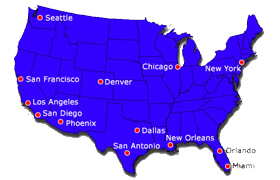

Junior High & High School
Junior High
Junior high or middle school is used to bridge the gap between elementary school and high school. It is separated into departments (ie. History, Math, Science) and the student is introduced to multiple classrooms and teachers. Most schools at this level are grades 7-8. This offers the student a window into how their future education will continue and is a very important developmental period for them.

Click Here For More Information
High School
High school will continue the students education in the same departmental format as introduced in junior high. Usually high school is grades 9-12 and each grade is given a name, as follows.
9th Grade – Freshman Year Starting at 13 to 15 years of age
10th Grade – Sophomore Year Starting at 14 to 16 years of age
11th Grade – Junior Year Starting at 15 to 17 years of age
12th Grade – Senior Year Starting at 16 to 18 years of age
At this level the student is becoming more of an individual and is able to choose elective classes to pursue their own interests. In grades 11 and 12 they are given even more freedom in their class schedule. Also, they will begin the process for applying to universities and colleges, taking standardized tests to show what they have learned in the last 12 years. This is a very important time for the student to choose a path for their future and a goal of study. Their success at this level will determine their future success and ambition to pursue their goals.

Click Here For More Information
Universities/Colleges/Graduate Schools
In general, Associates and Bachelors degrees are considered undergraduate course work, while the Masters and Doctoral degrees are considered graduate course work. Graduate course work - in most cases - is very specific and particular to one field of study. Thus, the graduate study is advanced course work which follows undergraduate course work.
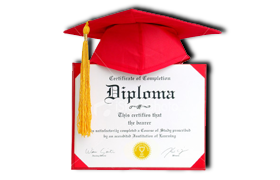

Click Here For More Information
ESL\English Language Classes
The USA is the most popular destination to study English as a Second Language, with schools and locations in the USA offering ESL programs and locations to suit every need. Most states in the USA have many English as a Second Language programs, with schools and locations offering ESL programs and locations to suit every need. These schools will prepare you for some o

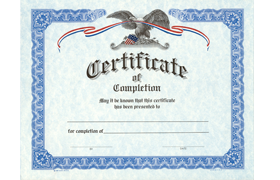
Click Here For More Information
Student Visas
The first step for a prospective nonimmigrant student is being accepted for enrollment in an established school which is SEVP certified. In general, for academic students attending a university, college, high school, private elementary school, seminary, conservatory or other academic institutions, including a language training program, an F visa is the appropriate category. For students attending vocational or other recognized nonacademic institutions, other than a language training program, an M visa is generally the appropriate category.
If you are going to the U.S. primarily for tourism, but want to take a short course of study that is recreational, and the course is less than 18 hours per week, you may be able to do so on a visitor (B) visa. If your course of study is 18 hours or more a week, you will need a student visa. When traveling to the U.S. to attend seminars, conferences or a program of study for academic credit then you will need a student visa
